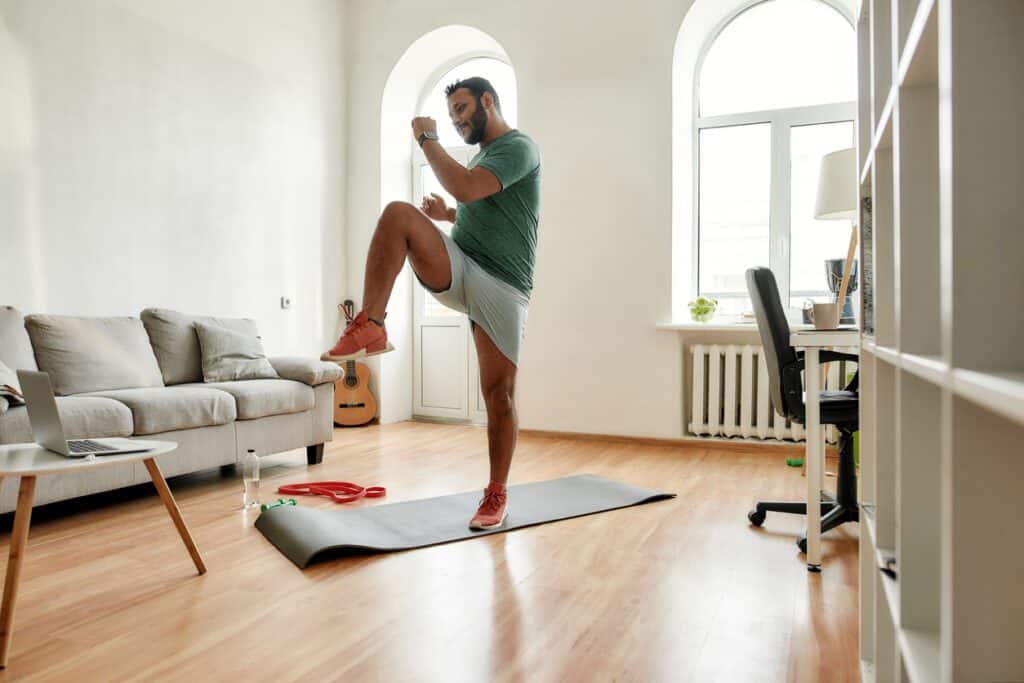Our bodies work in a system, where different areas can be affected by several factors, but modern-day orthopedics often remains focused on treating the individual components. For instance, runners who complain of kneecap pain usually receive treatment on the knee alone.
However, recent research indicates that the lower back, feet and hips usually play a big role in kneecap-related pain.
This means that stretching and strengthening the hip, feet and core can help your entire body function and feel better. If you’re suffering from pain in your kneecap or hips, read on to learn more about do-it-yourself exercises that can remedy some of that pain.
Kneecap Pain Relief
The patellofemoral area is where your kneecap (or patella) rests in a groove on the end of the femur. This is where most orthopedic physicians and physical therapists often turn their attention when a patient comes in with kneecap pain, maintaining a special focus on the quadricep muscle as the culprit and treatment for the discomfort.
Although there is a role for quadriceps strengthening to stabilize the kneecap, evidence is now emerging that this might be an incomplete picture.
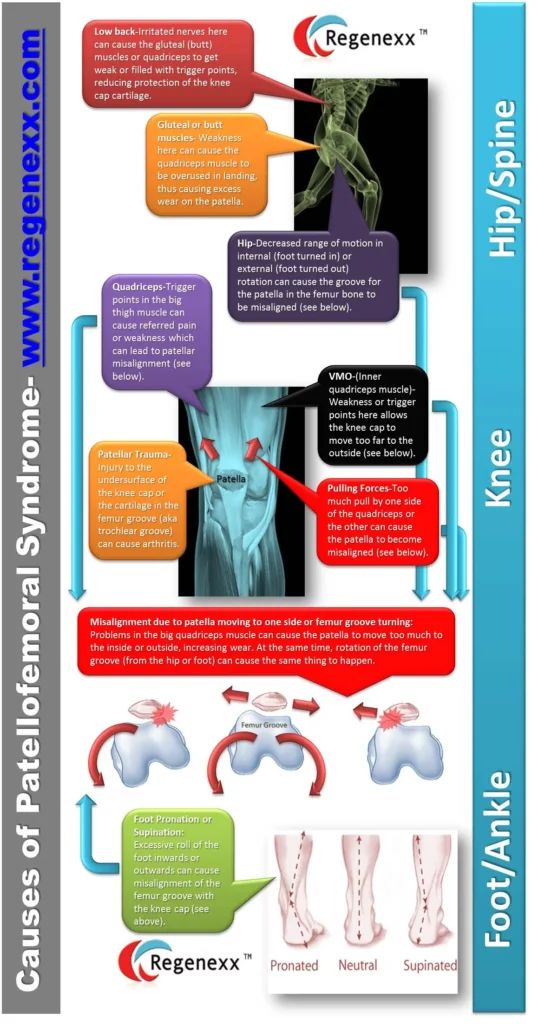
As pictured, kneecap pain can be a result of dysfunctions at a number of different body parts between the foot and the low back.
Also, recent studies show that the lower back, core and hips are important to the health and protection of the kneecap. This study, which investigates kneecap cap pain during running, shows that kneecap pain in runners is directly correlated with activation of the gluteal muscle.
Another study compared two different exercise routines that sought to ease patellofemoral pain. In this randomized control trial, patients either did a therapy that focused solely on the knee or focused on strengthening the hip and core muscles. The results revealed that the patients who were in the hip and core group had better pain relief than their counterparts who focused on knee-focused exercises.
If you experience kneecap pain, your hips and core may be the answer to relieving your patellofemoral issue.
The Human Hip
Your hip joint is the largest joint in your body, and it has a wide range of motion because of its ball-and-socket formation. When you have pain in your hip, you may lose some or all of that mobility.
Any of the following issues (including any combination) might be the cause you’re limited of this limited range of motion:
- hip joint weakness due to weak muscles
- hip joint restriction from osteoarthritis or changes to the bone
- hip joint restriction from labrum cartilage tears and resulting pain
- hip pain from damaged or injured hip tendons
- hip joint restriction from short and tight muscles
- hip pain from suboptimal biomechanics, or movement issues
A recent epidemiological study in the Journal of Rheumatology showed a strong correlation between hip pain and knee pain. The study surveyed 5,500 patients aged 65 and up to find out how common concomitant hip and knee pain is.
The study found that “less than half (48%) of the symptomatic respondents had unilateral problems affecting one hip or knee joint only” while the majority of patients had hip and knee pain at the same time.
To walk, run, dance or perform in an athletic sport your hips, knees and ankles all work together in a loaded motion. All these joints depend on one another as a system resulting in the desired bodily movements of any athletic endeavor. This is why dysfunction in one area, like the hip, commonly causes pain in another area like the knee.
Dysfunctional movements have downstream consequences and can lead to changes in the way you walk, which can further increase movement compensations and ultimately the risk of injury.
It’s important to address problems with other parts of the body in order to avoid and manage pain in the hip as imbalances anywhere in the lower part of the body can bring about hip problems. The first step in correcting the knee issues is to know where they are originating and can take action to make improvements.
Some tightness can be present in the following areas of the hip and pelvis:
- rectus femoris (the largest quadricep muscle)
- hip capsule
- deep hip rotators
- erector spinae back muscles
Additionally, weakness in the hip and pelvis might be present in the following areas:
- buttock or gluteal muscles
- hip abductor muscles
- hamstring muscles
- quadricep muscles
- core muscles
Continuing down the lower extremity chain, there may be tightness or weakness in the foot and ankle structures:
- great toe flexors
- calf muscles (also known as the gastrocnemius and soleus)
- plantar fascia
Other muscles to consider:
- foot intrinsics
- posterior tibial muscle
The areas listed above are vital to your foot’s arch support. Exercises have been developed to target the affected muscles to loosen and strengthen them so they can support the knee joint.
Exercises to Improve Flexibility while Managing and Avoiding Hip Pain
The following exercises can be done at home in order to help your hip stability and reduce pain. Be sure to spend 15 to 20 minutes doing these exercises. You can use no equipment or things around the house like a baseball, tennis ball or lacrosse ball.
For better results, plan to practice the regimen four times weekly for a duration of six weeks. If you still don’t see any improvement, schedule a visit to an orthopedic specialist. The information in this blog post is not to be used in place of professional medical treatment, diagnosis or advice.
If you have questions about your personal medical situation, reach out to your doctor or another qualified healthcare professional. The following exercises were obtained from Physiotec 3, a home exercise software that many physiotherapists use:
Hip Flexor Stretch
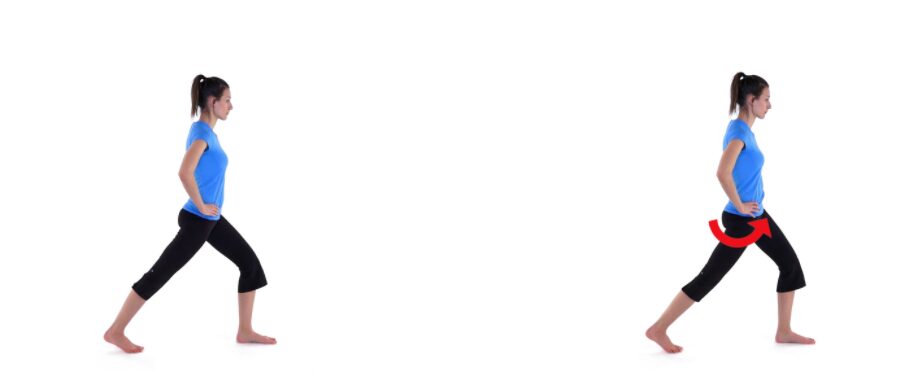
- Stand in a lunge position. Your back knee should have a slight bend.
- Tilt your pelvis back and gradually shift your weight onto your front leg to the point of feeling the front of your hip stretch.
- Keep your back neutral during the entire exercise.
- Use the support of a wall or a chair to help you keep your balance.
- Hold the position for a minute.
- Repeat the exercise twice per side.
Seated Figure 4 Stretch
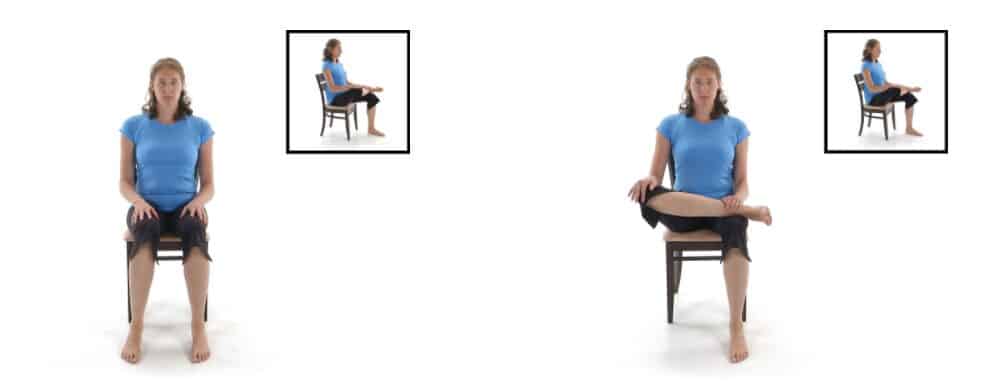


- Sit in a chair with one foot resting on the opposite knee to create a figure 4 position.
- Press on your knee to open the leg. Straighten your back as you shift your upper body forward until you feel a nice stretch in your gluteal muscles.
- Maintain this position for one minute.
- Repeat the exercise twice per side.
Knee to Chest Stretch



- While lying on your back, pull one knee toward your chest.
- Keep this position until you feel your lower back and hip stretch.
- If desired and comfortable, pull the leg toward the middle of your body for a deeper stretch.
- Maintain the position for one minute.
- Repeat the exercise twice per side.
Great Toe Stretch
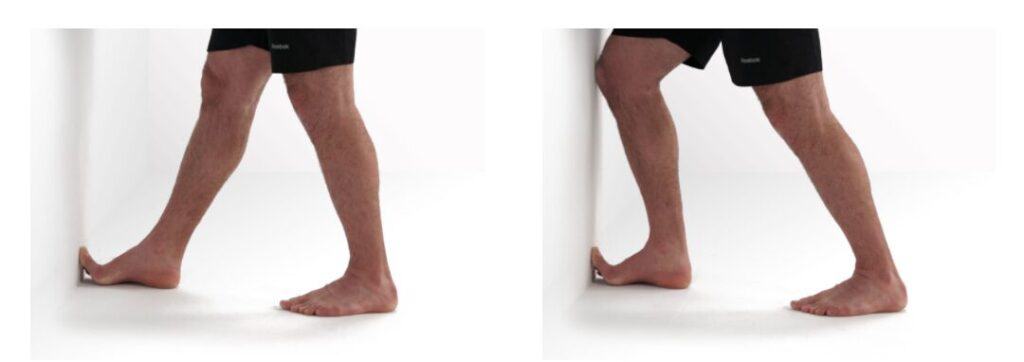


- Face a wall.
- Press your toes against the wall and attempt to bring your knee in contact with the wall. You should feel a stretch underneath your foot.
- Hold the position for one minute.
- Repeat the exercise twice per side.
Exercises to Strengthen the Hip
To make the hip stronger, one of the main areas to strengthen is the gluteus medius, which is a stabilizing buttock muscle. It has been studied to determine the exercises that tone it best and helps it achieve the strongest contraction.
In a study, published in the International Journal of Sports Physical Therapy, researchers compared the contraction strength of the gluteus medius that a variety of rehabilitation exercises produced.
We’ve included the instructions for the study’s top two exercises: a side plank with leg lift and a clamshell. They both achieved high percentages of maximal voluntary muscle contraction in addition to two other effective hip strengthening exercises.
Hip Flexor Side



- Lying on your back, bend your knees and keep your back in a neutral position, halfway between arched and flat.
- Use your core by tightening your pelvic floor and your transverse abdominal muscles.
- Breathe evenly from your abdomen as you straighten one of your legs.
- Revert to your original position and do the exercise with the other leg.
- Keep your back in a neutral position throughout the entire exercise.
- Do two sets of 10 reps.
Wall Plank
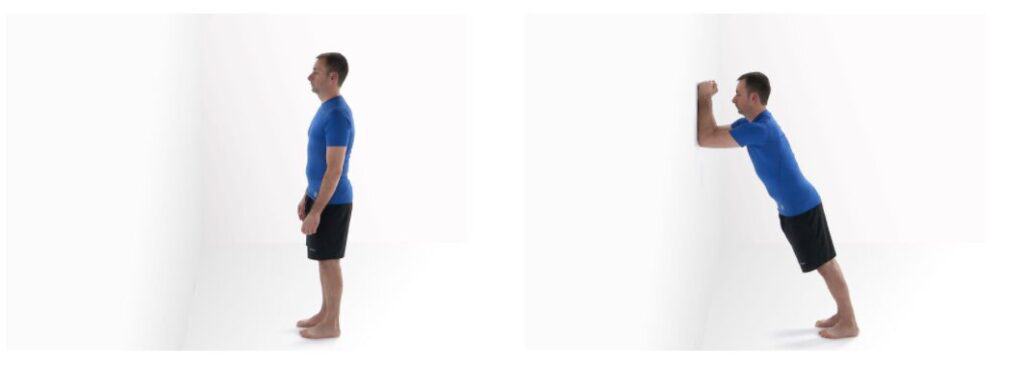


- Face a wall far enough away so that when your forearms will rest on it, your abdominals will be at a slight angle.
- Place your forearms on the wall at shoulder height. Keep this position while your body is in a straight line.
- For a more challenging exercise, stand farther away from the wall.
- Maintain this position for one minute.
- Do it two times.
Clamshell
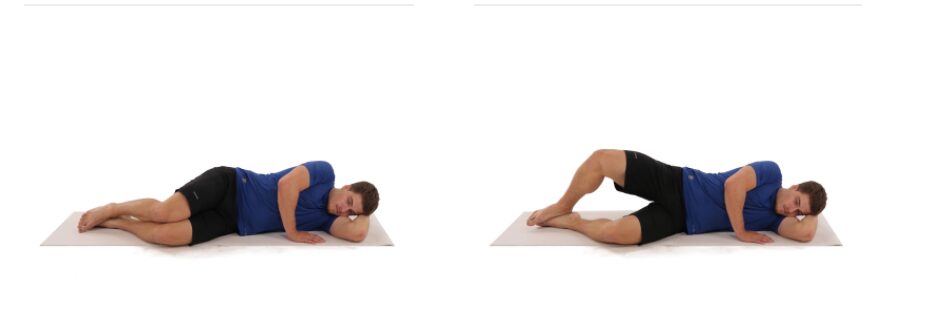


- Slightly bend both of your legs while lying on your side. Make sure your injured leg is on top. Lift it as you keep your pelvis stable. Your leg should be slightly bent and your heels should touch each other.
- Turn your hip to cause your foot and kneecap to point up to the ceiling.
- Revert to your original position and do the exercise again.
- Do two sets of 10 reps
Side Plank with Hip Abduction



- While lying on your side, bend your knees 90 degrees. Align your legs with your body.
- Put your elbow on the floor directly beneath your shoulder.
- Raise your pelvis from the floor and lengthen your top leg.
- Raise your left as high as you can.
- Maintain the side plank while raising and lowering your top leg.
- Do two sets of 10 reps on each side.
We hope you find these exercises helpful. If you continue to experience pain, feel free to contact our offices to discuss your non-surgical options.
